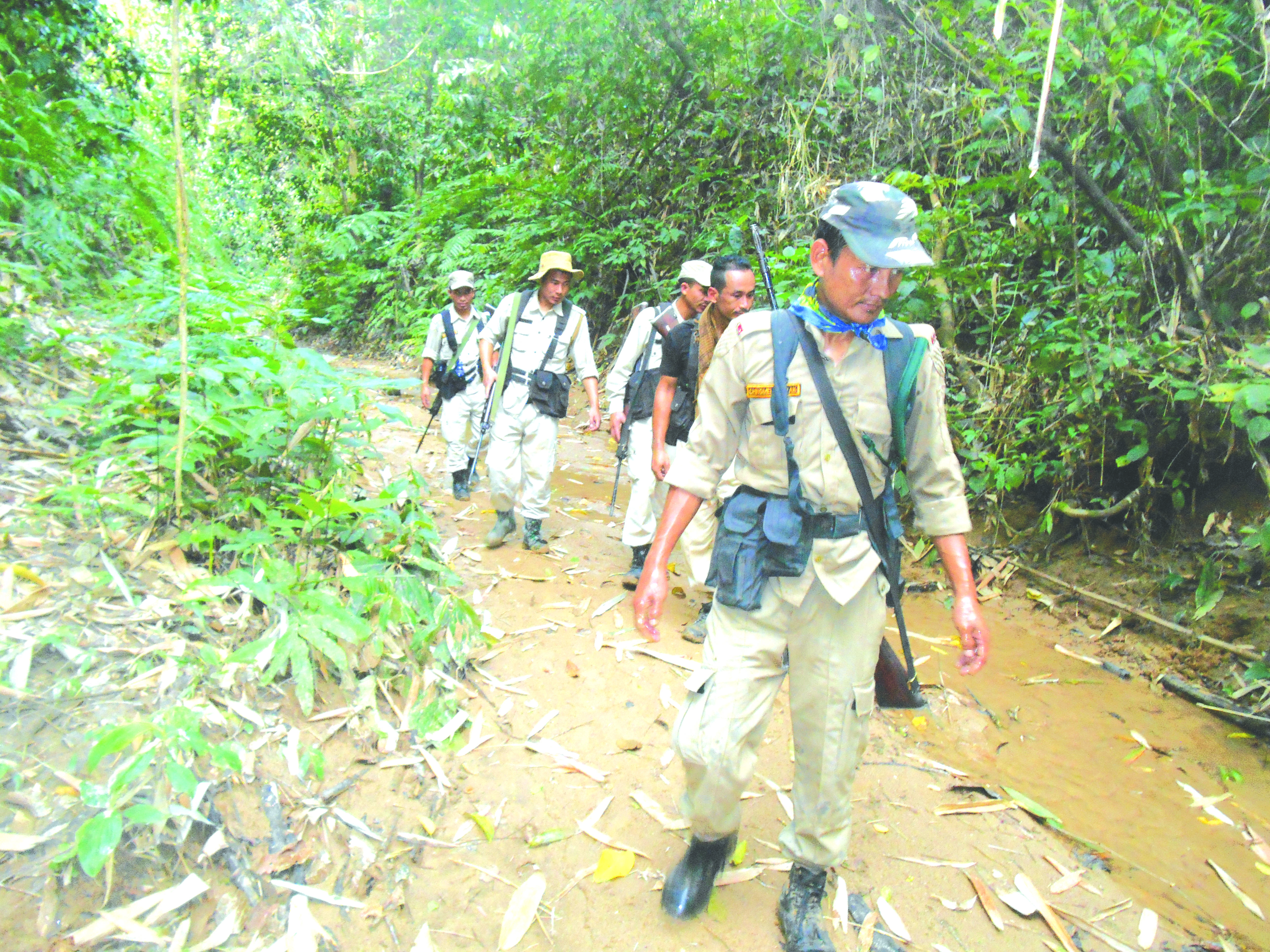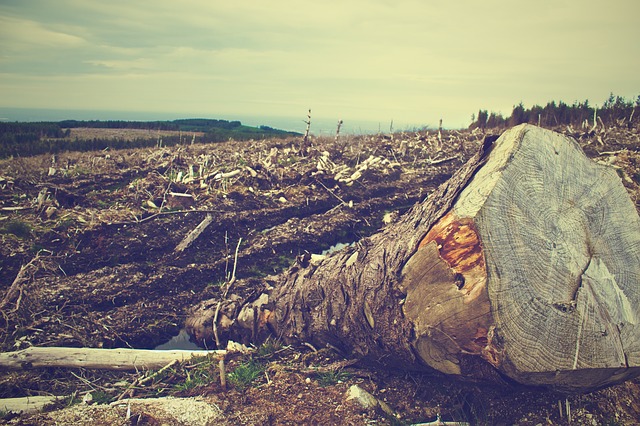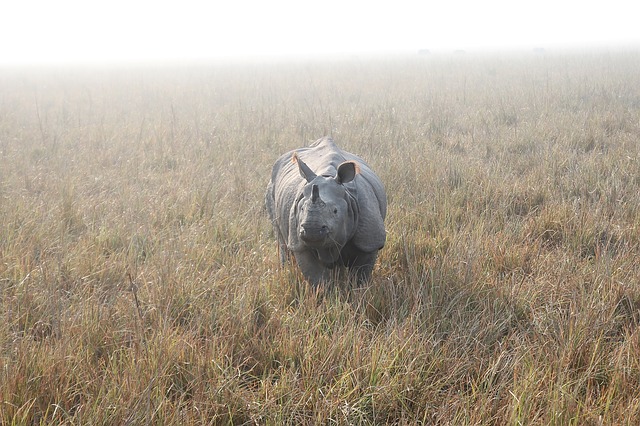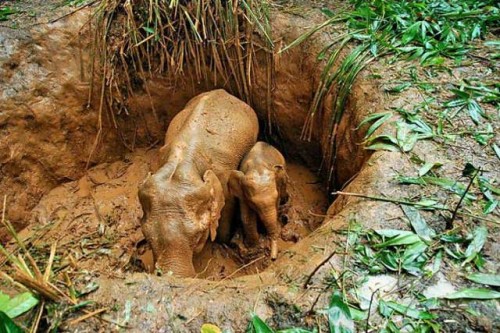One of the last refuges of forest wildlife in Nagaland- the Intangki National Park in Peren district is fast diminishing under the axe of illegal logging.
A trek inside the Intangki National Park brings a sense of the helpless despondency it is facing – hardly any huge trees in sight; felled trees strewn around and no, the chance of crossing paths with a wild animal is highly unlikely.
The entrance to the forest is no longer dense, as illegal loggers have paved logging roads for huge trucks to enter. Although fishing is banned in Intangki River, some young men, who claim themselves as from “the Camp,” are seen making their way to the Intangki River for fishing.

Illegal logging inside the Park goes back to the 1960s. Several including politicians, educationists and businessmen are said to have accumulated their wealth through illegal logging inside the Intangki. Illegal loggers would also buy land in the adjoining areas of Intangki forest and use the property for logging inside the Park.
The Intangki National Park is surrounded by over 13 villages namely Phajang, Lilen, L.Lilen, Phaijol, Vongkithem, New Chamcha, Pelhang B. Pelhang, Bongkolong, Phaikholum, New Soget, Beisumpuilo, Khelma, Beisumpuikam.
After witnessing the destruction done to the forest, Beisumpuikam Village Council Chairman narrates, how, in an effort to protect the Park, the villagers shifted to its current location, which is located right next to the Park.
However, they (concerned village) remain helpless- having to reckon with ‘powerful’ forces like those from Naga underground group (s) and high profile contractors and politicians who mint money by ruthlessly bring down the trees.
Villagers say there are more than five entry and exit points used by illegal loggers. All vehicles exit through Ahthibung village. Earlier, loggers would take their vehicles directly to Lilen village but after the road was blocked, the timbers are transported till the village and then dragged with ropes detouring the village.
The Zeliangrong Baudi claims that almost 60 per cent of the Intangki forest is gone due to illegal logging and hunting. This is despite the fact that under the Nagaland Forest Act 1968, cutting and felling of trees, fishing, hunting and shooting in a reserved forest are all punishable with fines and imprisonments.
Department of Forests, Ecology, Environment and Wildlife, Nagaland has deployed 70 forest guards, 16 foresters and 2 Forest Rangers at the Intangki National Park, which apparently is not enough.

The Underground Factor
Timber extraction by Naga underground group (s) is one of the major threats leading to the disappearance of the Park’s natural habitat, villagers residing nearby Intangki have alleged.
“Not only are the UGs involved in the illegal logging business but they also fell trees for domestic use in their camps,” a villager from Beisumpuikam village revealed. On the pretext of cutting dry wood for domestic use, they fell fresh trees too. In a day, we see them making three to four trips to the forest and these trips are made more than twice a week,” the villager alleged.
The villager explains how they are powerless to stop such illegal activities of the national workers.
“They are the ones violating the law. They will warn us not to fell trees or fish in the river but they are the ones who goes first to break the rules.”
“They know what they are doing is illegal. They say they are national workers. They need to realize how to protect the national property and safeguard it,” a member of Zeliangrong Baudi (N) maintained.
History Of Intangki National Park
Since the inception of making the forest a national property, which dates back to the early 1920s, Intangki, once known as a virgin forest, has been a victim to illegal logging, hunting, poaching and encroachment.
In 1920, during the British Colonial period, the then Deputy Commissioner of Naga Hills, J H Hutton gave the idea for the creation of a reserved forest at the Intangki –Dhansiri valley. According to documents in possession of the Forest Department, Beisumpui village agreed to donate their land, and in return received receipts for the entitlement of muzzle loading gun, two blankets, two bags of rice and Rs.10, from the Commissioner’s office.
A survey team was sent on February 7, 1921, which took three months to complete. On May 7, 1923, the Governor in council declared the formation of Intangki Reserved Forest covering an area of 44, 800 acres. Another 5,120 acres of forestland was added to Intangki which came into effect on August 15, 1927.
There is also a report about how after a few decades, a group from Beisumpui village went to Kohima to claim the payment only to be told that the receipts were no longer valid since India had attained independence from the British.
On April 22, 1975, the Government of Nagaland declared the Intangki Reserved Forest covering an area of 20,202 hectares as Intangki Wildlife Sanctuary. Further, on March 3, 1993, the Government of Nagaland changed the Intangki Wildlife Sanctuary to Intangki National Park. The Park was declared as an Elephant Reserve on February 2, 2005.
This article has been republished with permission from Morung Express
More Related Stories,
First Flock Of Amur Falcons Arrive In Nagaland
Helping Rice Growers And Wildlife Through Grain for Grain
Tree Frog Found After 150 Years










One thought on “Intangki National Park: Haven For Illegal Logging”